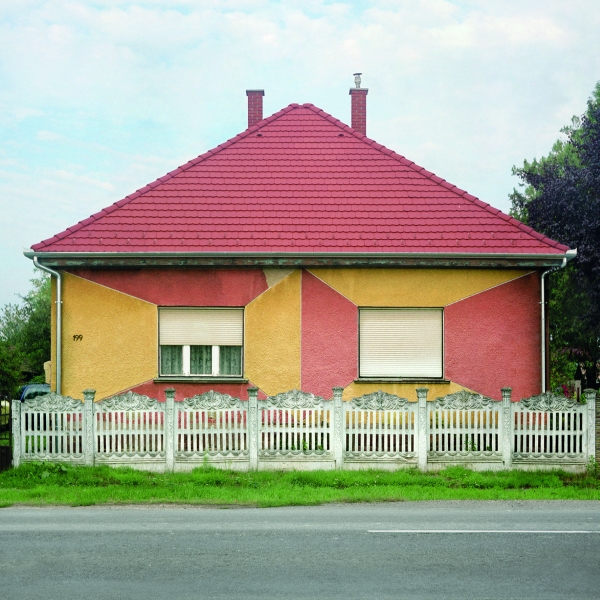The Post-Communist „Hungarian Cube”
From Official Standard Designs to Subversive Practices
Text: Sándor Hornyik

House, Toponár, photo: Katharina Roters
The mysterious „Hungarian cube” is nothing else than the Kádár cube, that is an almost square shape house with a tent-shape roof and appr. 100 m2 floor area of which about 1 million still exist in the countryside according to estimations. This design became widespread sometime in the 1960s in Hungary, and remained a prevailing one of family housing till the late 1980s when it was replaced by the „alpine” version. The „Hungarian cube”, however, is not simply a material submitted for a design contest, with an attractive subtitle as follows: „the architectural folk art of goulash communism”, but an almost ten-year-old research project as well, which has been published now as a book with a different subtitle which sounds even more exciting from the aspect of culture history: „subversive ornaments in socialism”. As the volume emphasizes ornamentation, whilst pushing the architectural mass into the background, in this study I ambitioned to deal with the ideological relevances of the Hungarian cube and subversive ornamentation rather than the evolution of the „Hungarian cube” or the issues related to the typology of family housing.





